Paul Bishop's Blog, page 9
September 9, 2019
CHARRO!
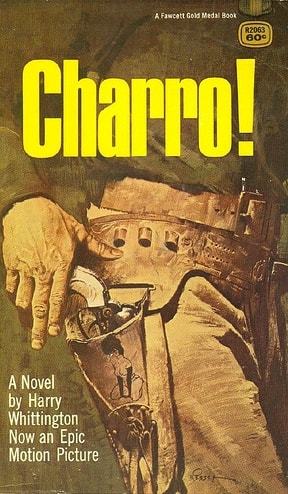 CHARRO!
CHARRO!Whittington's novelization of the Elvis Presley movie Charro! is among his best work in the Western genre.
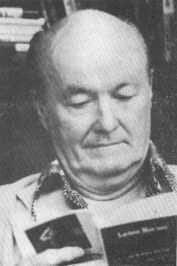 Interestingly, the cover blurb calls the book a novel, not a novelization—a subtle, but deceptive difference. Only Whittington’s name appears on front cover, perpetuating the deception of a novel. On the title page, small print indicates the book is based on a story by Frederick Louis Fox. This type of treatment was very unusual for a novelization—presenting it as if the movie was based on the book instead of the other way around.
Interestingly, the cover blurb calls the book a novel, not a novelization—a subtle, but deceptive difference. Only Whittington’s name appears on front cover, perpetuating the deception of a novel. On the title page, small print indicates the book is based on a story by Frederick Louis Fox. This type of treatment was very unusual for a novelization—presenting it as if the movie was based on the book instead of the other way around.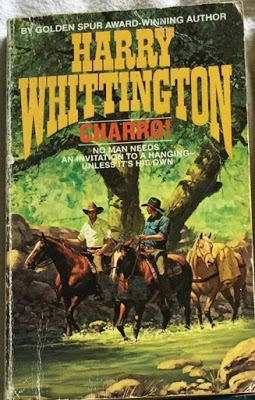 There is also another related oddity…Charro! is the novelization of an Elvis Presleymovie. This should have been considered a huge marketing coup. But if so, why is there no tie-in photo of Elvis in his role as Charro on the cover? Why is there no mention of it being an Elvis movie—not even on the back cover? Inquiring minds want to know.
There is also another related oddity…Charro! is the novelization of an Elvis Presleymovie. This should have been considered a huge marketing coup. But if so, why is there no tie-in photo of Elvis in his role as Charro on the cover? Why is there no mention of it being an Elvis movie—not even on the back cover? Inquiring minds want to know.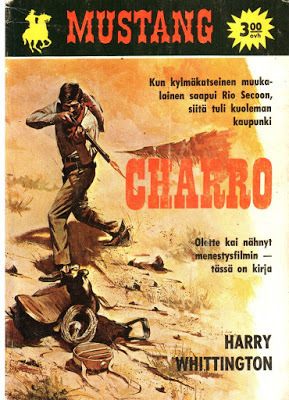 Perhaps there were contractual issues at the time regarding the use of Elvis’ image. Maybe there was a dispute between the publisher and the movie studio over the novelization. Or possibly the book was so much better than the final shooting script, it became an embarrassment to the director/screenwriter of the movie.
Perhaps there were contractual issues at the time regarding the use of Elvis’ image. Maybe there was a dispute between the publisher and the movie studio over the novelization. Or possibly the book was so much better than the final shooting script, it became an embarrassment to the director/screenwriter of the movie.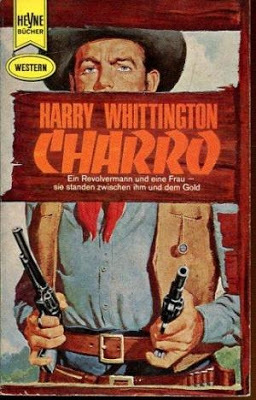 There is also a chance the situation ensued because Whittington put the original sex and violence from the treatment back into the novelization. This, as stated, didn’t mesh with the director’s puritanical standards, which had originally caused the sex an violence to be removed from the treatment.
There is also a chance the situation ensued because Whittington put the original sex and violence from the treatment back into the novelization. This, as stated, didn’t mesh with the director’s puritanical standards, which had originally caused the sex an violence to be removed from the treatment.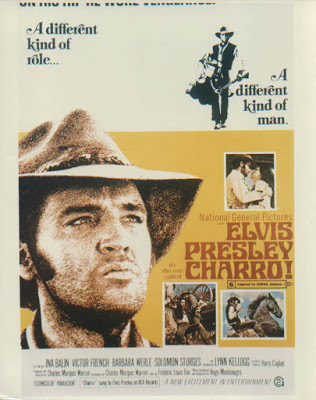 Whatever the reason, Charro! is a less than inspired movie. It is, however, an inspired example of a genre Western, a novelization, Harry Whittington’s writing chops.
Whatever the reason, Charro! is a less than inspired movie. It is, however, an inspired example of a genre Western, a novelization, Harry Whittington’s writing chops.Charro! isn’t only an outstanding novel. The Gold Medal first edition paperback has an awesome cover by Ron Lesser. Known for his iconic posters for Clint Eastwood films, Lesser illustrated covers for hundreds of paperback westerns, mass market softcovers, and movie posters.
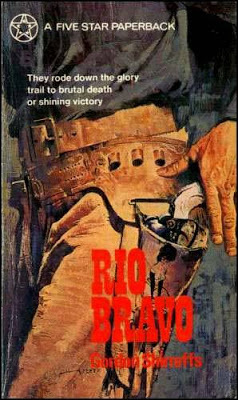 What makes this particular cover exceptional is the addition of the illustrated dancehall girl on the holster. The first time I saw the cover, I thought the dancehall girl was an aftermarket doodle. But it is an example of Lesser’s gift of artistic genius—He gleaned the detail of the dancehall girl on the holster from the novel, then added it as a unique touch.h The illustration was also reused on the British paperback edition of Rio Bravo by Gordon Shirreffs (not to be confused with the movie of the same name).
What makes this particular cover exceptional is the addition of the illustrated dancehall girl on the holster. The first time I saw the cover, I thought the dancehall girl was an aftermarket doodle. But it is an example of Lesser’s gift of artistic genius—He gleaned the detail of the dancehall girl on the holster from the novel, then added it as a unique touch.h The illustration was also reused on the British paperback edition of Rio Bravo by Gordon Shirreffs (not to be confused with the movie of the same name). 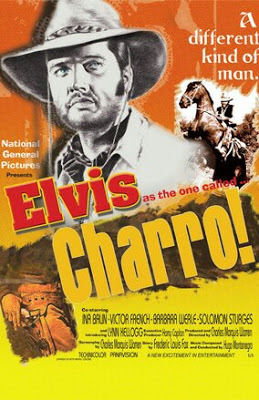 It's also interesting to note that the Ron Lessor cover illustration also shows up on one of the movie's promotional posters. It was also used on a number of foreign editions.
It's also interesting to note that the Ron Lessor cover illustration also shows up on one of the movie's promotional posters. It was also used on a number of foreign editions.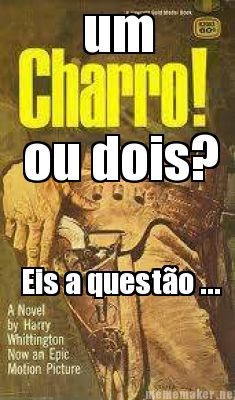 To take timely advantage of a movie’s initial release, many novelizations are written based only on a brief script outline known as a treatment. As a novelization’s author is rarely privy to the full elements of characterization, mood, and tone of a finished film, a novelization can be substantially different. The best novelization writers rely on their own imagination to flesh out motivations, plot points, and even create new characters in order to produce a coherent story. In the hands of a top pro like Whittington, the novelization can become a special entity all its own—as with Charro!
To take timely advantage of a movie’s initial release, many novelizations are written based only on a brief script outline known as a treatment. As a novelization’s author is rarely privy to the full elements of characterization, mood, and tone of a finished film, a novelization can be substantially different. The best novelization writers rely on their own imagination to flesh out motivations, plot points, and even create new characters in order to produce a coherent story. In the hands of a top pro like Whittington, the novelization can become a special entity all its own—as with Charro!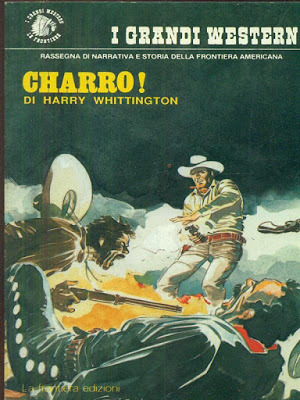 Charro! is an excellent novel based on a bad film. Whittington developed his story from a film treatment entitled Come Hell, Come Sundown by Frederick Louis Fox. The title for the film was later changed to Charro!—An odd choice since charro is a term applied to Mexican horseman, particularly those who participate in rodeos. As the character of Charro (portrayed in the movie by Elvis) is neither Mexican nor a horseman, and there is nary a rodeo in sight, it is nothing more than a cool moniker.
Charro! is an excellent novel based on a bad film. Whittington developed his story from a film treatment entitled Come Hell, Come Sundown by Frederick Louis Fox. The title for the film was later changed to Charro!—An odd choice since charro is a term applied to Mexican horseman, particularly those who participate in rodeos. As the character of Charro (portrayed in the movie by Elvis) is neither Mexican nor a horseman, and there is nary a rodeo in sight, it is nothing more than a cool moniker.Fox’s original treatment, Come Hell, Come Sundown, contained many violent and sexually related scenes. The director of the movie deemed these too objectionable and excised them from the final script. Whittington didn’t have any such proclivities, putting all the sex and violence back in when he wrote the novelization, making his book much better than the film on which it is based.
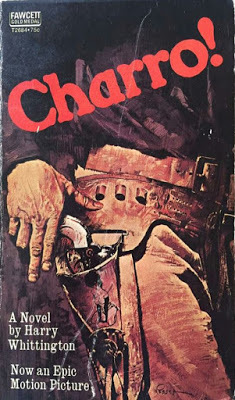 The conflict at the heart of Charro! revolves around a gold-plated Mexican cannon belonging to Emperor Maximilian, which has been stolen by an outlaw band. The Mexican army, various Mexican thugs, and bounty hunter Jess Wade are after the $2,000 reward for the return of the cannon. As the story progresses, the outlaws want to ransom the cannon back to the town from where it was stolen. By this time they have trapped Wade into working with them as they use the cannon to terrorize the town into capitulation. Tension and violence soak Whittington’s take on the story, written with the lean muscular prose for which he was renown.
The conflict at the heart of Charro! revolves around a gold-plated Mexican cannon belonging to Emperor Maximilian, which has been stolen by an outlaw band. The Mexican army, various Mexican thugs, and bounty hunter Jess Wade are after the $2,000 reward for the return of the cannon. As the story progresses, the outlaws want to ransom the cannon back to the town from where it was stolen. By this time they have trapped Wade into working with them as they use the cannon to terrorize the town into capitulation. Tension and violence soak Whittington’s take on the story, written with the lean muscular prose for which he was renown.
Published on September 09, 2019 22:23
September 8, 2019
FORGOTTEN TV WESTERNS: TATE
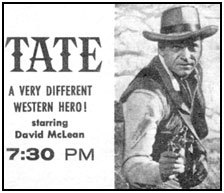 FORGOTTEN TV
FORGOTTEN TV WESTERNS: TATEAiring on NBC from June 8 until September 14, 1960, Tate was conceived by Harry Julian Fink (who later created Dirty Harry and T.H.E. Cat) as the quintessential Western loner.
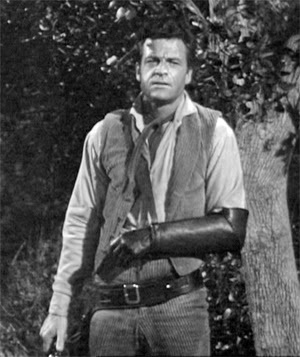 The thirty minute action Western, was a summer replacement show, which didn't develop the needed ratings in its short run to be picked up by the network as a regular series. This was a shame as Tate (portrayed by David McLean) is an interesting character.
The thirty minute action Western, was a summer replacement show, which didn't develop the needed ratings in its short run to be picked up by the network as a regular series. This was a shame as Tate (portrayed by David McLean) is an interesting character. 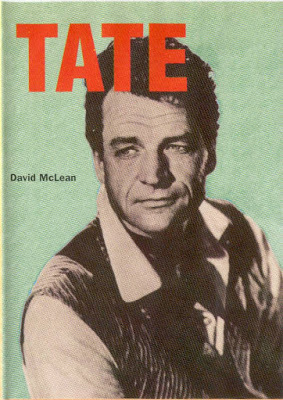 The first handicapped hero in television history, Tate would establish the trope of a hero being able to overcome his physical challenges, which would later be embodied by Raymond Burr as the wheelchair bound Ironside, James Franciscus as the blind detective Longstreet, and an eventual cavalcade of others.
The first handicapped hero in television history, Tate would establish the trope of a hero being able to overcome his physical challenges, which would later be embodied by Raymond Burr as the wheelchair bound Ironside, James Franciscus as the blind detective Longstreet, and an eventual cavalcade of others.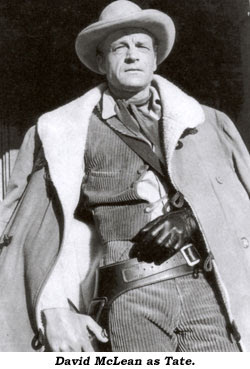 Losing the use of his left arm at the Battle of Vicksburg during the Civil War, Tate is forced to wear a sling. His injured arm is covered in black leather with a black glove on his hand. Tate is a widower. However, while the cause of his wife Mary's death is not specified, a gunfight seems the likely culprit. This plays well into Tate's tormented gunfighter status.
Losing the use of his left arm at the Battle of Vicksburg during the Civil War, Tate is forced to wear a sling. His injured arm is covered in black leather with a black glove on his hand. Tate is a widower. However, while the cause of his wife Mary's death is not specified, a gunfight seems the likely culprit. This plays well into Tate's tormented gunfighter status.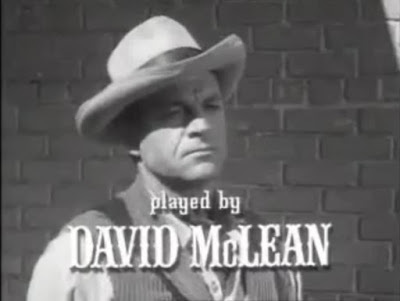 Forced to leave his hometown as a teenager due too gunplay, Tate finds himself in the pilot episode (Home Town) pushed/encouraged by Marshal Morty Taw to return and help Taw hang Tate's old childhood friend (James Coburn) who has murdered four people.
Forced to leave his hometown as a teenager due too gunplay, Tate finds himself in the pilot episode (Home Town) pushed/encouraged by Marshal Morty Taw to return and help Taw hang Tate's old childhood friend (James Coburn) who has murdered four people.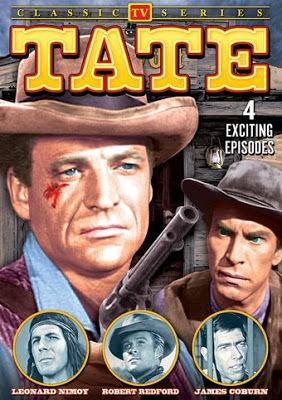 In subsequent episodes, Tate roams the West as a bounty hunter-gunfighter. True to the nature of most hired guns on television western series of the day, Tate was discriminating as to whom he worked for. He was also prone to change sides if he found himself misled by his employers. Wickedly fast on the draw, he also carries a shotgun under a serape "to help even the odds." Because of his top gun reputation, he is routinely forced into gunfights by other men who quickly regret their rash decision.
In subsequent episodes, Tate roams the West as a bounty hunter-gunfighter. True to the nature of most hired guns on television western series of the day, Tate was discriminating as to whom he worked for. He was also prone to change sides if he found himself misled by his employers. Wickedly fast on the draw, he also carries a shotgun under a serape "to help even the odds." Because of his top gun reputation, he is routinely forced into gunfights by other men who quickly regret their rash decision.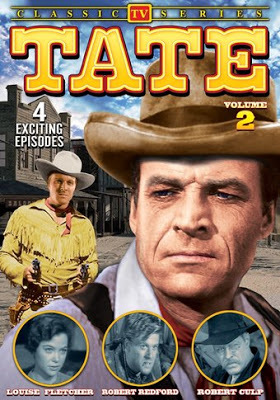
Show creator Harry Julian Fink most likely got the go-ahead for Tate based on the well recieved episodes of Have Gun Will Travel. He subsequently wrote most of the Tate episodes, one of which was directed by Ida Lupino.
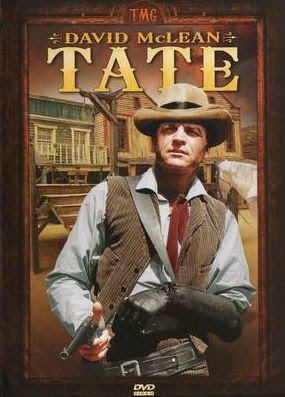 The ultimate demise of Tate was brought about by the show's cerebral approach to the Western and the fact it was too downbeat for a mainstream audience. The series is available on DVD and is good entertainment for fans of the genre.
The ultimate demise of Tate was brought about by the show's cerebral approach to the Western and the fact it was too downbeat for a mainstream audience. The series is available on DVD and is good entertainment for fans of the genre.
Published on September 08, 2019 20:18
RIO BRAVO / ALEX TOTH
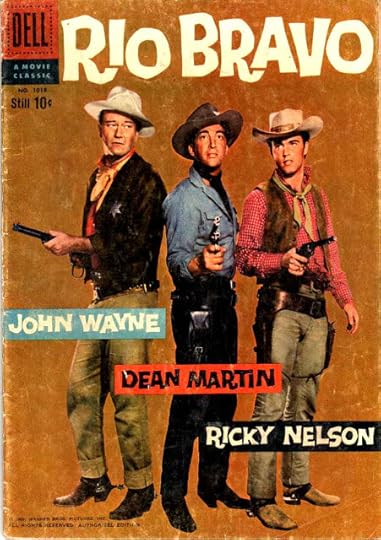 RIO BRAVO / ALEX TOTHFour color Western movie tie-in comics are also cool, but pricey, collectables. Rio Bravo, based on Leigh Brackett's screenplay and published by Dell, is a perfect example. to view the full comic on the Alex Toth Archives blog
CLICK HERE
...
RIO BRAVO / ALEX TOTHFour color Western movie tie-in comics are also cool, but pricey, collectables. Rio Bravo, based on Leigh Brackett's screenplay and published by Dell, is a perfect example. to view the full comic on the Alex Toth Archives blog
CLICK HERE
...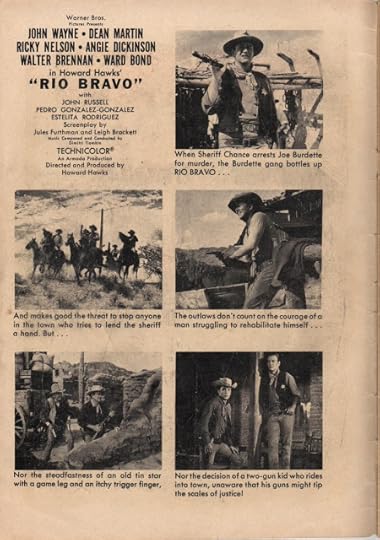
Published on September 08, 2019 19:43
September 7, 2019
BANDELERO
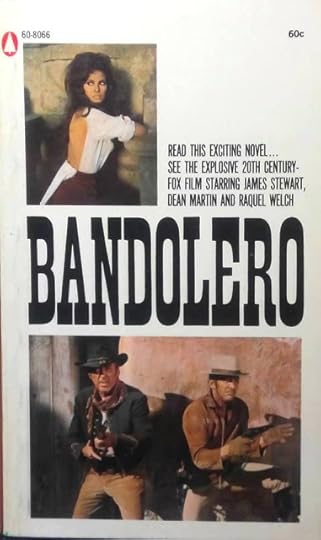 BANDELEROThe paperback novelization of Bandelero was written by Arnold Hano, best known for his terrific noir Western, The Last Notch...Hano was also a well known editor, who nurtured the career of the noir master himself, Jim Thompson...
BANDELEROThe paperback novelization of Bandelero was written by Arnold Hano, best known for his terrific noir Western, The Last Notch...Hano was also a well known editor, who nurtured the career of the noir master himself, Jim Thompson...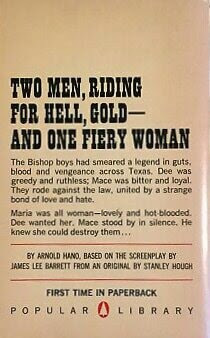
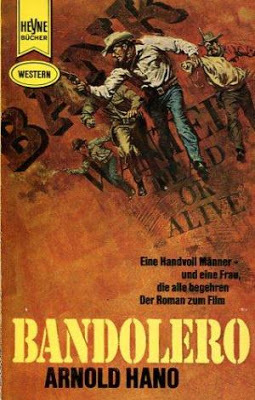
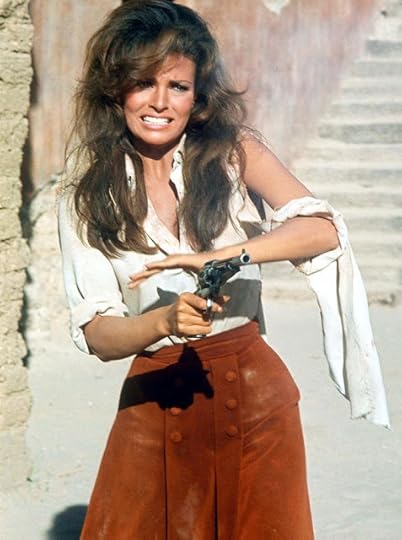
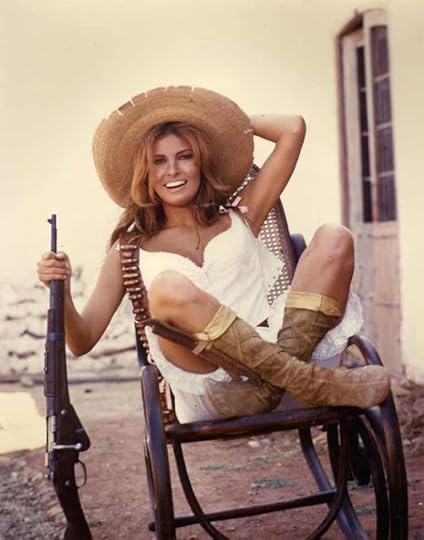
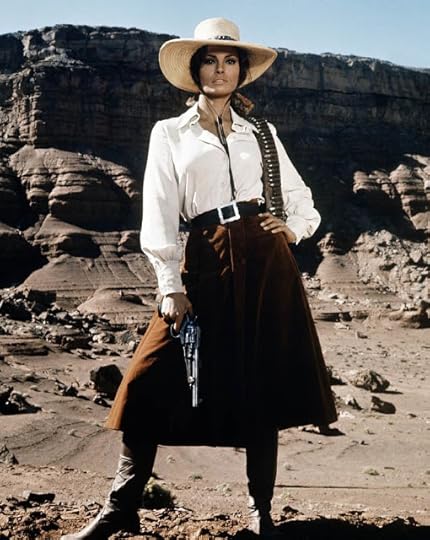
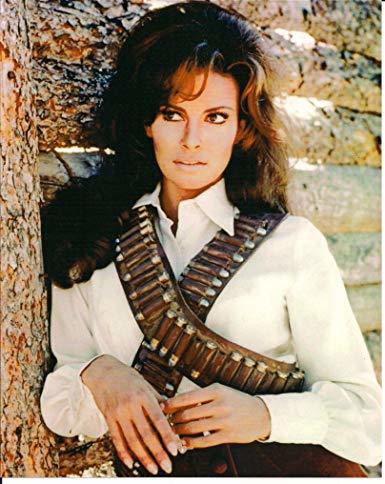
Published on September 07, 2019 21:54
HANNIE CAULDER
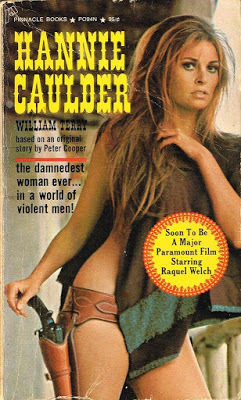
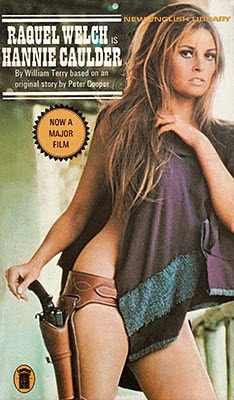 HANNIE CAULDERThe paperback novelization of Hannie Caulder was written by one of the original Piccadilly Cowboys, Terry Harknett (under the pseudonym William Terry)...Harknett would, of course, go on to fame and fortune as the creator and writer of the violent Western paperback original series, Edge (under his George Gilman pseudonym)...Pictured are both the American first edition from Pinnacle (1972) and the true first edition from British publisher New English Library (1971)...
HANNIE CAULDERThe paperback novelization of Hannie Caulder was written by one of the original Piccadilly Cowboys, Terry Harknett (under the pseudonym William Terry)...Harknett would, of course, go on to fame and fortune as the creator and writer of the violent Western paperback original series, Edge (under his George Gilman pseudonym)...Pictured are both the American first edition from Pinnacle (1972) and the true first edition from British publisher New English Library (1971)...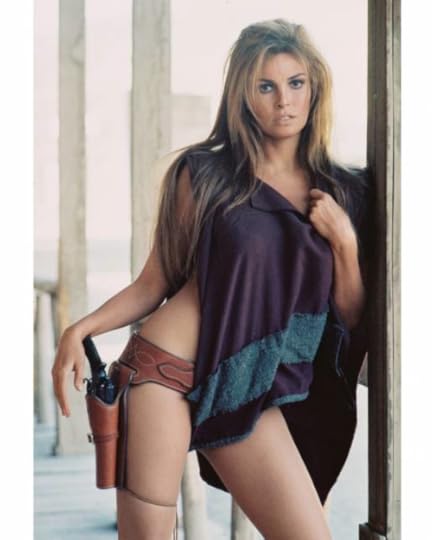
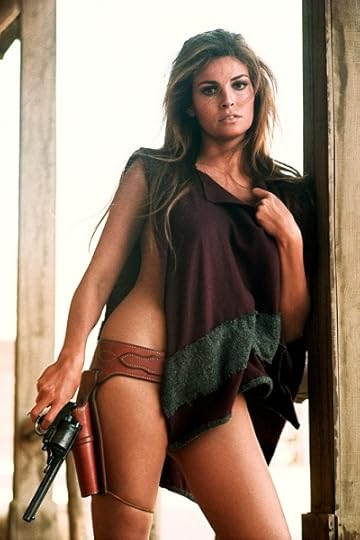
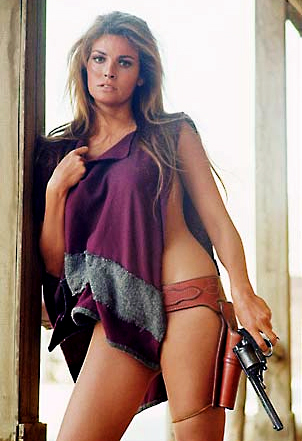
Published on September 07, 2019 20:14
SHOTGUN MAN
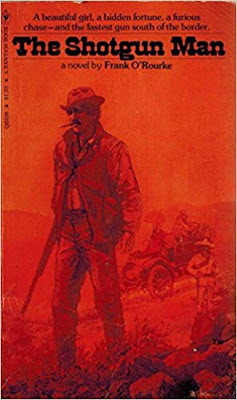
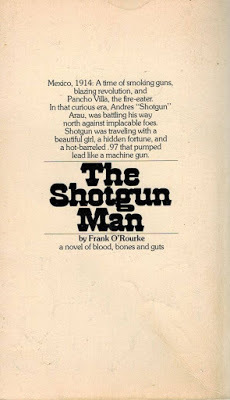 SHOTGUN MANI've always considered Frank O'Rourke's little known novel Shotgun Man as very similar in character and setting to his best known novel, The Professionals (originally: A Mule For The Marquesa)...If you love The Professionals, Shotgun Man is worth checking out...
SHOTGUN MANI've always considered Frank O'Rourke's little known novel Shotgun Man as very similar in character and setting to his best known novel, The Professionals (originally: A Mule For The Marquesa)...If you love The Professionals, Shotgun Man is worth checking out...
Published on September 07, 2019 19:44
JOHN WAYNE WESTERN TIE-INS
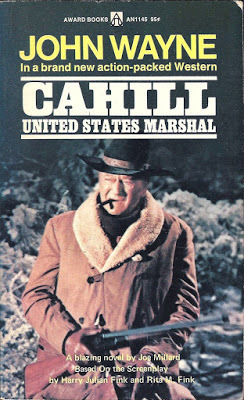
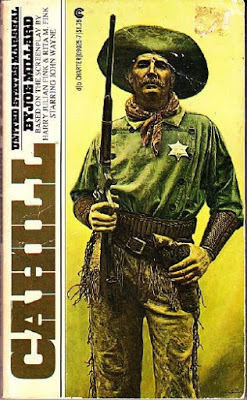 JOHN WAYNE WESTERN TIE-INSMany John Wayne Westerns generated movie tie-in novelizations, including The Undefeated (screenplay by James Lee Barrett), which was novelized by noir master Jim Thompson...Big Jake (screenplay by Harry Julian Fink and R.M. Fink) was scribed by the prolific Richard Deming...Sam Bowie (which, according to David Spencer, was a pseudonym for western wordslinger Todhunter Ballard) did both Chisum (screenplay by Andrew J. Fenady) and The Train Robbers (screenplay by Burt Kennedy)...
JOHN WAYNE WESTERN TIE-INSMany John Wayne Westerns generated movie tie-in novelizations, including The Undefeated (screenplay by James Lee Barrett), which was novelized by noir master Jim Thompson...Big Jake (screenplay by Harry Julian Fink and R.M. Fink) was scribed by the prolific Richard Deming...Sam Bowie (which, according to David Spencer, was a pseudonym for western wordslinger Todhunter Ballard) did both Chisum (screenplay by Andrew J. Fenady) and The Train Robbers (screenplay by Burt Kennedy)...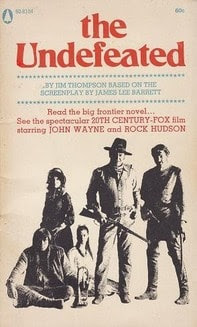
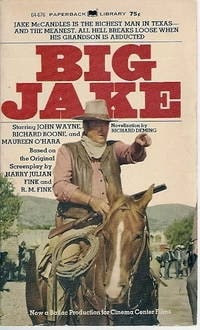
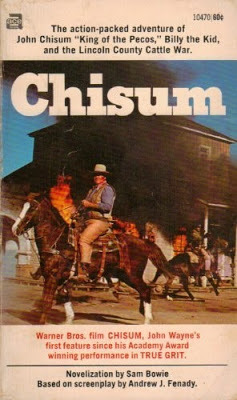
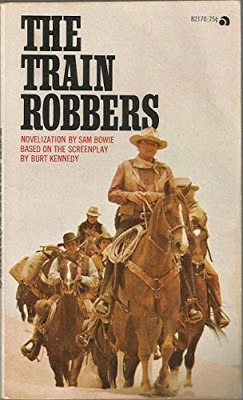
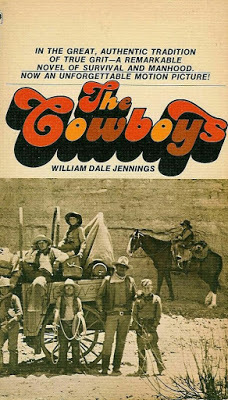
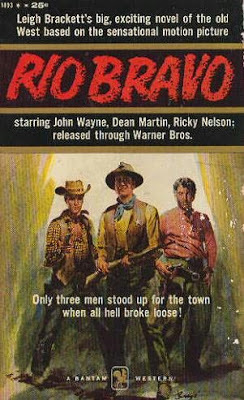
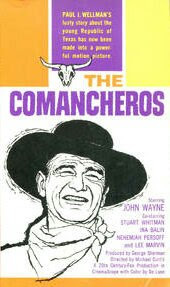
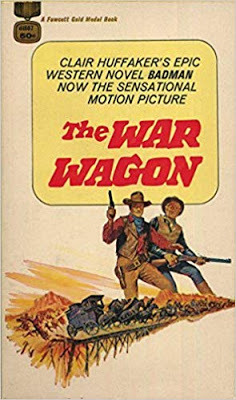
Published on September 07, 2019 15:15
100 RIFLES
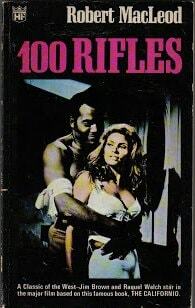 100 RIFLESProlific Western wordslinger Robert Macleod wrote The Californio on which the movie 100 Rifles was based. The film, while a Western, was a British production, and I believe this British tie-in edition was the only one published as I've never seen or come across a version from an American publisher...
100 RIFLESProlific Western wordslinger Robert Macleod wrote The Californio on which the movie 100 Rifles was based. The film, while a Western, was a British production, and I believe this British tie-in edition was the only one published as I've never seen or come across a version from an American publisher...
Published on September 07, 2019 15:11
September 6, 2019
THE PROFESSIONALS
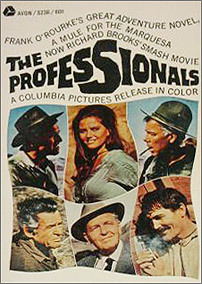 THE PROFESSIONALS
THE PROFESSIONALSMy favorite Frank O'Rourke novel, The Professionals, started life as a paperback original under the title A Mule For The Marquesa. The title was changed to coincide with the moniker of one of my favorite Westerns, The Professionals, which was, of course, based on A Mule For The Marquesa.
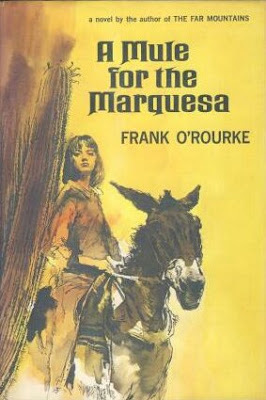 The Professionals was clearly a better title and stuck around for a number of reprint editions. It has taken a while, but I believe I've collected all of the paperback versions...
The Professionals was clearly a better title and stuck around for a number of reprint editions. It has taken a while, but I believe I've collected all of the paperback versions...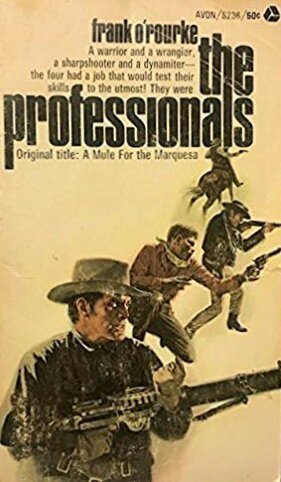
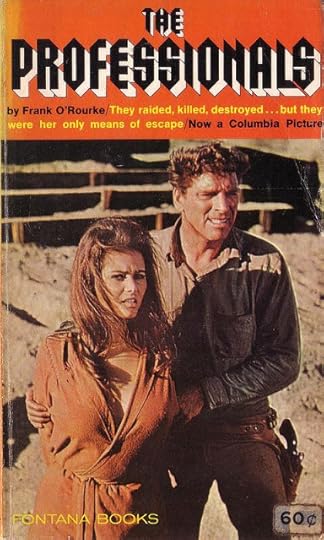
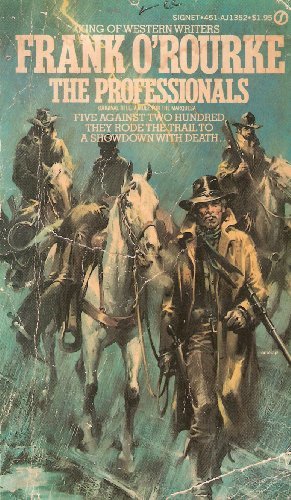
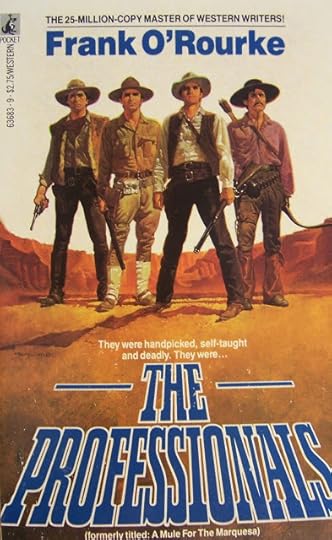
Published on September 06, 2019 22:38
THE BRAVADOS
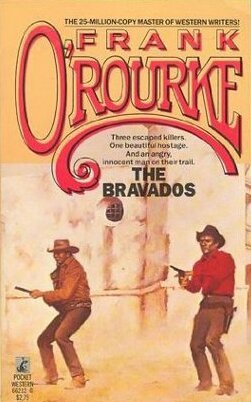 THE BRAVADOS
THE BRAVADOSWhile not as popular as The Professionals, Frank O'Rourke's novel The Bravados was made into a successful film starring Gregory Peck.
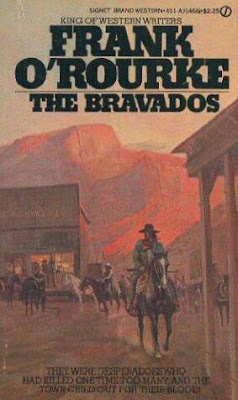 I'm particularly drawn to the cover featuring an illustration of Claude Akins and Yul Brynner borrowed (probably without permission) from a scene in The Return of the Magnificent Seven, which of course had nothing to do with the actual movie version of the book...
I'm particularly drawn to the cover featuring an illustration of Claude Akins and Yul Brynner borrowed (probably without permission) from a scene in The Return of the Magnificent Seven, which of course had nothing to do with the actual movie version of the book...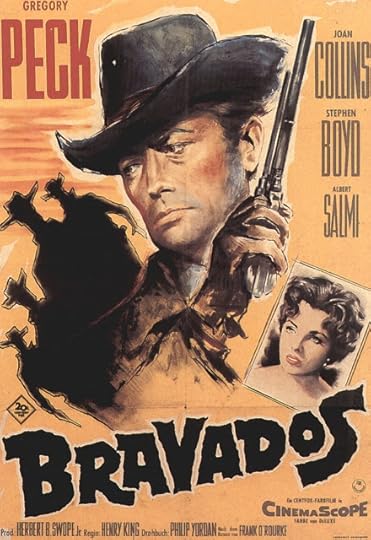
Published on September 06, 2019 22:24



